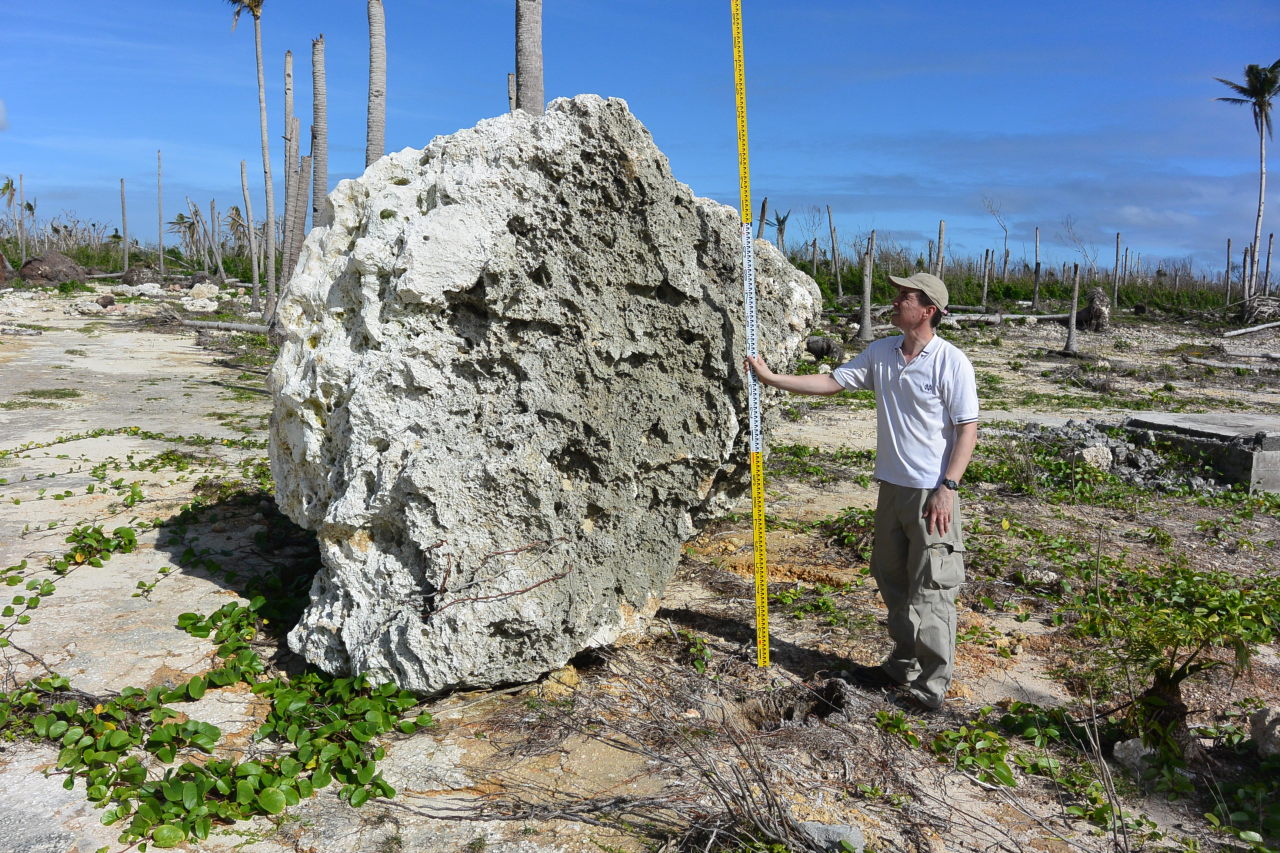Moving mountainsLast year, the strongest storm to make landfall in recorded history, super-typhoon H
Moving mountainsLast year, the strongest storm to make landfall in recorded history, super-typhoon Haiyan, devastated portions of the Philippines (see our coverage here: http://tmblr.co/Zyv2Jszp5ojc, http://tmblr.co/Zyv2Js_NFb3X, http://tmblr.co/Zyv2Js_1-S77). These rocks are where they sit today because of that storm. The ability of a current to move rocks depends on a couple things; the speed the water is flowing at and the depth of the moving water. Deeper water moving faster has greater energy and is therefore able to move bigger pieces of sediment. Stronger waves move bigger sediment.Of course, the crazy thing about Haiyan is, I just called a rock bigger than a vehicle and probably weighing about 10 metric tons a “piece of sediment.” Boulders like these made of offshore limestone were grabbed by the waves and pushed on shore. Scientist Andrew Kennedy from the University of Notre Dame documented several examples of these monstrous chunks of rock moved on shore by Haiyan’s >300 km/hr winds and waves and presented those photos at last week’s meeting of the American Geophysical Union (#AGU14). He described these as the largest rocks he’s ever seen moved by a storm, comparable in size to rocks picked up in the 2004 and 2011 tsunami waves.-JBBImage credit: Andrew Kennedyhttps://agu.confex.com/agu/fm14/meetingapp.cgi#Paper/5848Read morehttp://www.livescience.com/49201-haiyan-waves-moved-giant-boulders.html -- source link
Tumblr Blog : the-earth-story.com
#haiyan#philippines#leyte#super typhoon#typhoon#nature#boulder#tsunami#storm surge#science
